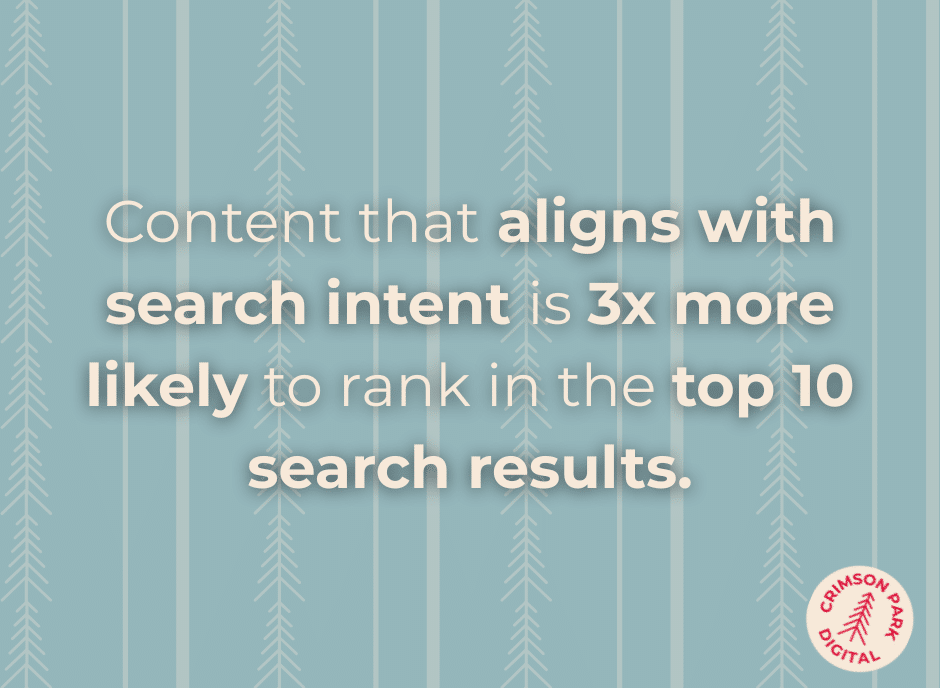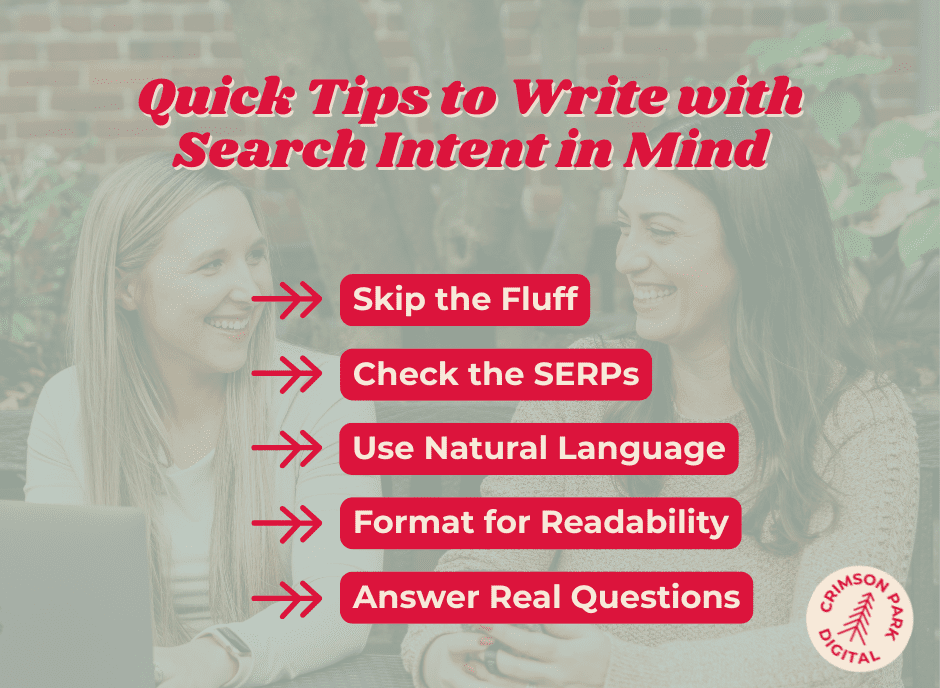What is Search Intent?
Search intent is the reason someone types something into Google (or any other search engine). Are they trying to learn something? Buy something? Find a specific brand or website?

If your content doesn’t match the reason behind the search, it won’t rank, and even if it does, users won’t stick around. There are four main types of search intent:
- Informational – The user wants to learn something. (“How to prevent varicose veins?”)
- Navigational – They’re trying to get to a specific page or brand. (“Visit Charleston official site”)
- Transactional – They’re ready to take action, usually a purchase. (“Buy COI tracking software for contractors”)
- Commercial – They’re researching options before deciding. (“Best family-friendly hotels in the Carolinas”)
Your content needs to clearly match one of these intents to truly hit the mark.
Why Search Intent Beats Keywords Alone
You can target the perfect keyword, but if your blog, page, or product doesn’t match what the user actually wants to find or learn, it won’t convert. Or rank well. Here’s what this looks like in action: Let’s say you’re a healthcare provider, and someone searches for “treatment options for ankle sprain.” If your page only talks about your clinic without actually addressing treatment types, recovery time, or patient outcomes? That visitor will bounce and so will your rankings.
Or maybe you’re in the tourism space, and someone searches “best weekend getaways in the Carolinas.” If your page is just a generic list of your amenities, without helpful travel ideas, curated itineraries, or local highlights, that user won’t stick around. But if your content speaks directly to what the user is looking for—with answers, comparisons, visuals, and expert insights—that’s a match. That’s intent-driven content. It builds trust, improves engagement, and signals to Google that your page deserves to rank.
How Do You Know What the Intent Is?
Uncovering search intent goes beyond identifying the right keywords. It’s about understanding what the user actually wants when they type a query into a search engine. While it might look simple on the surface, there’s a deeper level of analysis involved. Marketing experts dive in to study the types of content that consistently appear at the top of search results. Are they blog posts, product pages, comparison guides, or videos? What questions are being answered? What kind of headlines and formatting are used? These are signals that point to the dominant intent behind a query. Professionals also look at user engagement metrics, related search behavior, and patterns in “People Also Ask” boxes to get a more complete picture. These insights help shape content that doesn’t just include a keyword, but fully aligns with what users are expecting to find.
What Matching Intent Really Looks Like
There’s a big difference between simply ranking for a keyword and fulfilling a user’s expectations. Content that matches search intent speaks directly to the user’s goal—whether that’s learning, comparing, navigating, or buying. For example, someone in the early research phase needs clear, educational content. A user ready to purchase is looking for features, pricing, and reviews. If the content doesn’t match where they are in that journey, they move on quickly, and search engines take notice. This is where strategic content creation plays a key role. Intent-driven assets are designed to guide users through the decision-making process. It’s not just about showing up in search, it’s about showing up with exactly what someone needs at that moment.

Writing for Intent Is a Skill and a Strategy
Creating content that aligns with search intent requires more than strong writing. It combines keyword research, audience understanding, UX considerations, and content structure. Today’s most successful content strategists write with clarity, cut through the noise, and format information in a way that’s easy to digest. They anticipate the reader’s questions and craft pages that offer meaningful answers—not vague filler. This approach results in content that’s more engaging, more actionable, and more likely to convert. It becomes a tool that serves both the user and the business, moving people from discovery to decision with purpose.
So, Do Keywords Still Matter?
Absolutely! They just aren’t the whole picture anymore. Think of keywords as your GPS coordinates. They’ll get you to the right area, but user intent is your map. It helps you navigate to exactly where your audience wants to go. Keywords still matter, but intent is the secret sauce. The better you understand why people search, the more your content will resonate, rank, and convert. So yes, keep researching keywords. Just don’t stop there.
Why This Matters for Your Business
Whether you’re a startup trying to make your mark, or an established business looking to scale, showing up in search results isn’t enough anymore. You have to show up with the right content, for the right person, at the right time. That’s where writing for intent shines. It makes your content more useful, more clickable, and more likely to convert. But here’s the thing: getting it right takes time, experience, and a whole lot of trial and error.
Want to Nail Search Intent Without the Guesswork?
At Crimson Park Digital, we help businesses create search-friendly, intent-aligned content that performs. Our team knows how to blend SEO best practices with a human-first approach that keeps your audience engaged and Google happy.

Ready to leave outdated keyword stuffing behind and connect with the people already looking for what you offer? Let’s talk. Your next great piece of content is just a click away.


